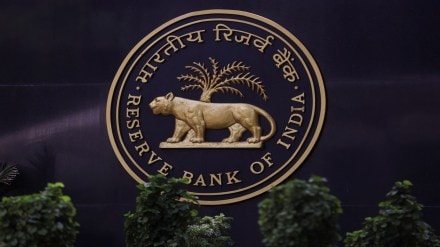By Shailendra Jhingan
The Reserve Bank of India’s (RBI) flexible inflation targeting (FIT) framework is due for a revision. India has been a recent entrant to inflation targeting (2016) although the framework has been around since 1990 with New Zealand being the first country to implement it. Today, there are 45 countries that are targeting inflation in one form or another. Despite being a late entrant, India has seen a considerable success in inflation management post-FIT with monetary and fiscal policy co-ordination ensuring inflation is far better behaved now than before.
Why core and headline CPI fall short
In a country like India with a high weightage of food items (46%), the government is an important stakeholder in inflation management as the quantum of supply often becomes more important in food price management. That is why some commentators have argued that core inflation is a better metric since it responds to monetary policy signals whereas food prices often oscillate merely because of supply-side dynamics. However, with less than half the weightage in the overall consumer price index (CPI) basket, core CPI excludes more than it includes. The RBI needs a more inclusive target which also responds to monetary policy and not just supply dynamics of volatile food items.
The RBI has alluded to tracking inflation with Arjuna’s eye. The story in Mahabharata goes like this. Guru Dronacharya is taking a test of the Kaurava and Pandava princes’ shooting skills by placing a clay bird at the top of a tree. The pupils were supposed to shoot at the eye of the bird. One by one the princes came forward. Their teacher asked each one question, “What do you see?” Each of them replied, “Gurudev, I can see the bird, the tree, my brothers, and you.” Drona did not allow them to shoot and asked them to stand aside. When it was Arjuna’s turn, Drona asked him the same question. He answered, “I can see the bird’s eye.” “Then, shoot at once,” ordered Drona. Arjuna’s arrow flew from the bow and pierced the left eye of the bird.
Why excluding vegetables makes sense
In the context of monetary policy, headline CPI inflation is much like what the other princes could see. It has the noise element which distracted all the other princes except Arjuna. And a large part of that noise emanates from vegetable inflation. For instance, vegetable inflation has seen a high of 42.2% in October 2024 and a low of -20.7% this July. Since vegetables are perishable with short cropping cycles, they tend to be extremely volatile and often distort the underlying inflation signals. Looking at headline inflation can often lead to delays in policy action and we know monetary transmission happens with a lag. For instance, in FY25 the RBI retained the withdrawal of accommodation stance largely due to an above target headline inflation (4.6% average) even as CPI ex-vegetable inflation was benign averaging 3.6%. Similarly from the beginning of 2021, CPI ex-vegetables was higher than headline inflation by more than 1% and the RBI started monetary tightening from April 2022. Once again CPI ex-vegetables surged above headline inflation from the middle of FY23 and the RBI raised the repo rate by 250 basis points over the year.
What works in favour of this measure is also the fact that vegetable prices tend to mean revert as supply catches up far more quickly than in case of cereals or other protein-based items which have a longer lag and also have a demand element embedded in the price signal. Typically, as households get wealthier they tend to consume more of protein-based items and the same is corroborated by the recent NSS survey which shows weight of cereals and vegetables coming down while that of processed foods, beverages, and protein-based items increasing. Not only should this measure give a signal of timing but also of the quantum of rate cuts. For instance, even in this financial year while CPI has averaged 2.4%, CPI excluding vegetables has averaged 3.9% which is closer to the target.
On the tolerance band, headline inflation is volatile in a range of 1.5-7.8% during the FIT regime when CPI excluding vegetables has ranged between 2.9% and 7.8%. Given that breach on the upper bound is asymmetric compared to the lower, should it mean keeping an asymmetric band given that instances of inflation remaining below 2% are few and far between whereas those of inflation remaining above 6% are more frequent (25% since 2016)—in particular when we see a pass-through of global energy and commodity prices? Empirically, an inflation above 6% should drive inflation expectations higher and result in higher nominal wage growth, which can impact services exports. A symmetric band along with a point target is helpful in signalling and communication. Would moving from a point target to a range be helpful? Market participants would use the mid-point of the range as the target and thus it may not be helpful as such and could lead to signalling and communication issues. Hence, given India’s potential growth and long-term trend inflation, a target of 4% with a band of +/-2% is most suitable. While monetary policy framework can continue to retain headline as the target for FIT, the actual policy should be made on the basis of signals coming from headline excluding vegetables, which is less volatile and contains far more information on the economic momentum than headline alone.
The writer is head-treasury, ICICI Bank.
Disclaimer: Views expressed are personal and do not reflect the official position or policy of FinancialExpress.com. Reproducing this content without permission is prohibited.
